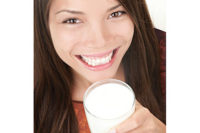Formulating or reformulating food and beverages can be risky and expensive. That’s nothing new. Fortunately, there are trend-tracking and forecasting reports to help inform successful product formulations. After reviewing these reports, I spoke with industry experts about the top-line food and nutrition trends for 2015. Read on for ideas about how to design dairy products to best meet the diverse needs, desires and interests of two major consumer markets: Millennials and Boomers.
Food, beverage and nutrition trends
Innova Market Insights analyzed the key global developments in food and drink launches. Its food and beverage Top 10 Trends list is one of the most respected in the industry. Innova’s 2015 trends include:
- Clear label (naturalness, origin, transparency in labeling)
- Marketing to Millennials
- Quick/convenient “healthy” snacks replacing traditional meals
- Good fats (unsaturated) and good carbs (naturally occurring sugars)
- New protein sources
- Real fruit and vegetable inclusions
A recent national survey of registered dietitians identified the top 15 nutrition trends for 2015. Seeds and nuts ranked as the top two new “superfoods,” with kale, coconut products, ancient grains, avocado and Greek yogurt following closely behind. In the healthy beverage category, the top choice of many dietitians was tea, especially green tea. Other trends noted were gluten-free, high-quality protein, clean eating, GMO-free and locally grown.
Opportunities in dairy
The “What’s Trending in Nutrition” survey of more than 500 dietitians was developed by Pollock Communications and Today’s Dietitian. According to Louise Pollock, president of Pollock Communications, New York, “Dietitians are the foremost experts in food and nutrition trends — it’s important that dairy processors and manufacturers consider these trends as they make new product decisions.”
Opportunities for the dairy industry include products that contain high-quality protein, are GMO-free or gluten-free and are clean and/or organic. These consumer demands continue to increase, Pollock noted. “Dietitians reported that consumers are still looking to meats and poultry for high-quality protein, suggesting that dairy has room to grow.”
Cathy Arnold, a formulations manager at Fortitech Premixes by DSM, Schenectady, N.Y., said she tends to agree with the food and nutrition trends — with one caveat.
“Choosing foods that contribute to maintaining one’s health is definitely front-of-mind with many consumers,” she said. “However, with our fast-paced lifestyles, the ability for many of us to eat a well-rounded diet can fall flat. This is where fortification can play a role in filling the nutrient gaps …
The health halo that comes with a dairy product makes this category ideal for fortification.”
In terms of dairy meeting consumers’ health needs, Arnold said the focus will always be on bone health, but she also sees a lot of opportunity for products that target immunity, cognitive function and sports nutrition. Immunity and cognition are of interest to most demographic segments, while sports nutrition is becoming more mainstream.
So, how can the dairy industry formulate dairy products to meet the specific needs of Millennials and Boomers?
Make it for Millennials
Sarah Hines, market specialist for dairy at DuPont Nutrition & Health, New Century, Kan., shared her insights about what dairy can do. Millennials are the consumers who are the most knowledgeable about food and the most tech-savvy. They’re often single and on the go, which makes them the prime shoppers for portable and protein-packed dairy foods.
Millennials want natural, ethical and simple products. Certain claims such as added protein or probiotics grab their attention, and cultured dairy foods are some of the best carriers for these nutrient content claims. Cleaner, simpler labels — where they make sense — are attractive to Millennials, but since most cultured dairy products are inherently healthy and “natural” to begin with, simply being a dairy product may be enough.
Build it for Boomers
Baby Boomers have grown up with dairy products in their lives. They’re less likely to be drawn to novel or trendy foods or diets. Although they’re extremely loyal to name brands, they sometimes find specific content claims attractive, such as improving heart health, immunity and improved vision or eye health. They are more inclined to try newer versions of cheese, yogurt and sour cream when one of these “good for you” nutritional claims is present.
That said, what consumers really want is everything. That shoppers want it all was, in fact, one of the top 15 nutrition trends noted by respondents of the “What’s Trending in Nutrition” survey. According to the press release about the survey, “While there will be new food and nutrition trends in 2015, nutrition experts agree that shoppers buy foods that also satisfy three basic needs: convenience, taste and price. There are some things shoppers just won’t sacrifice, regardless of what’s trendy.”




